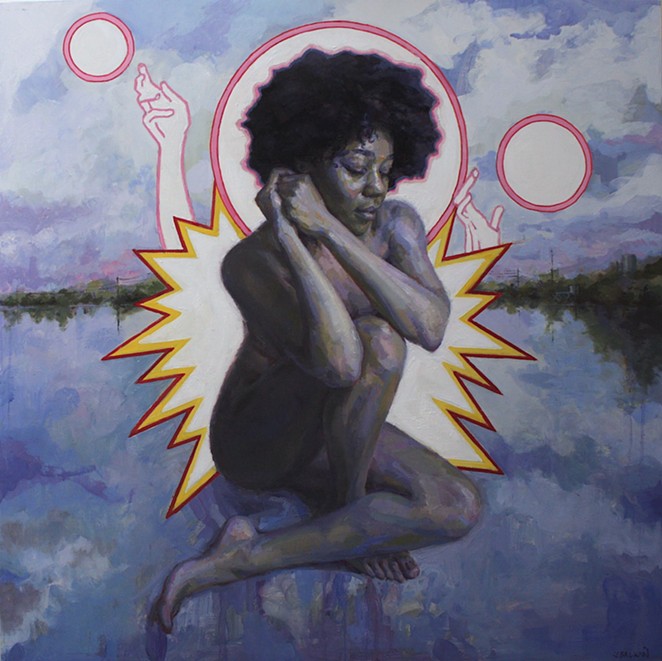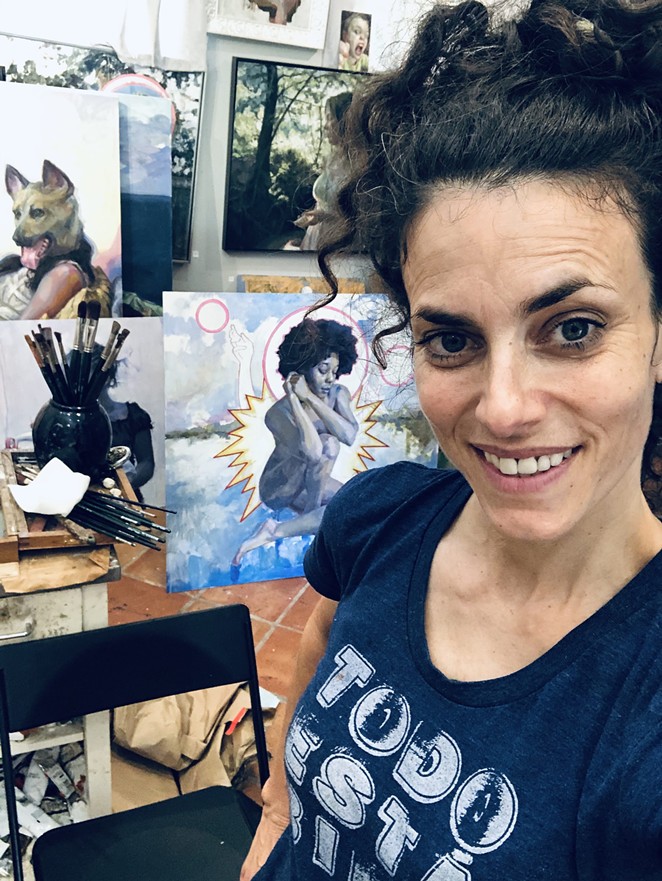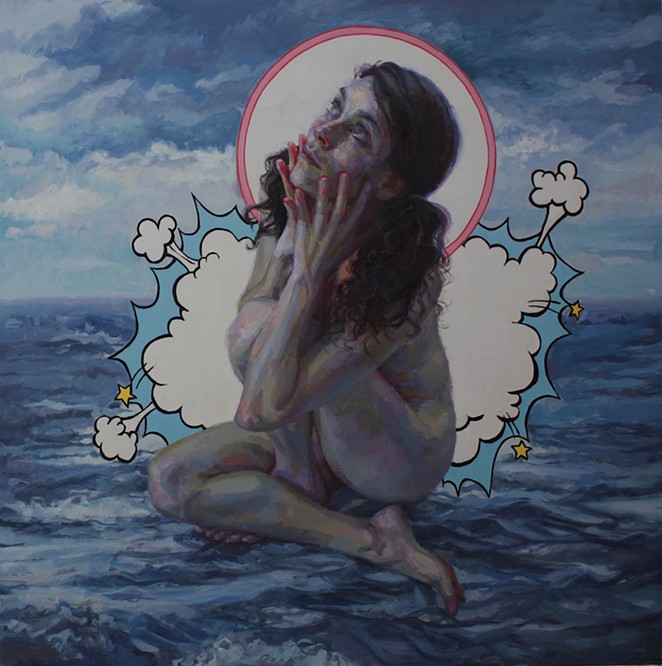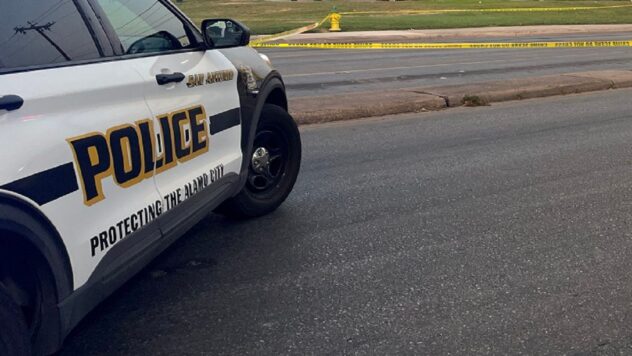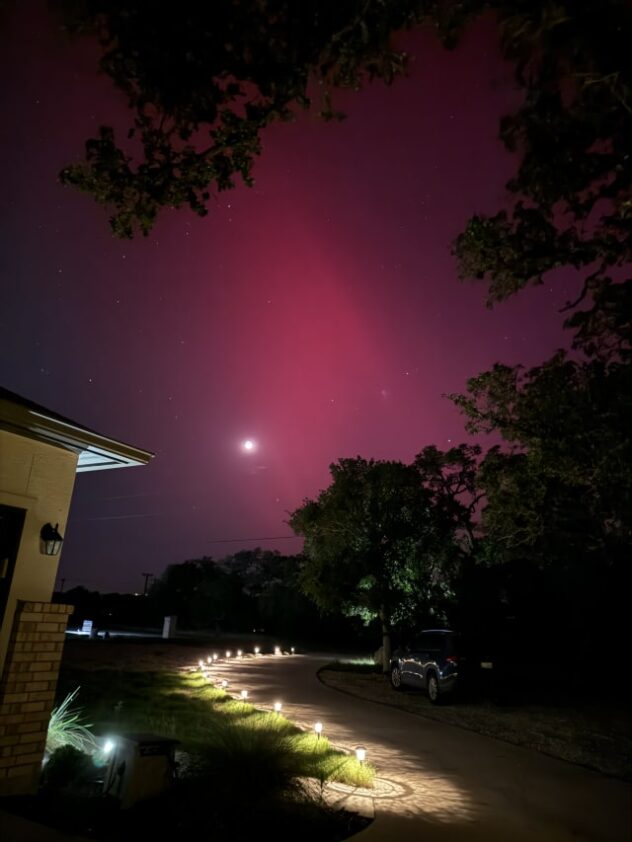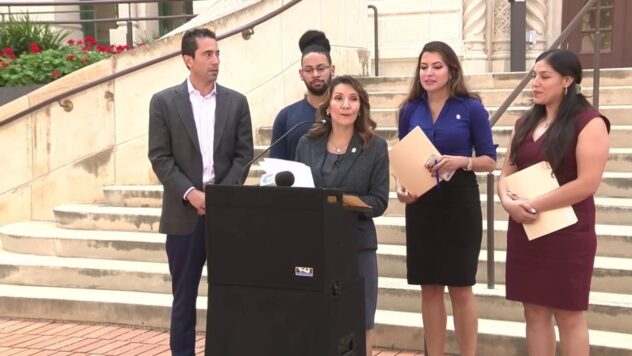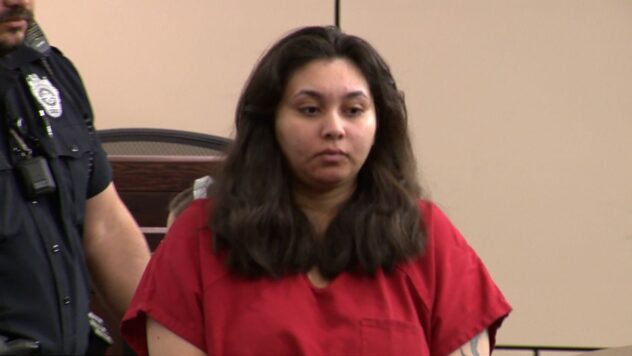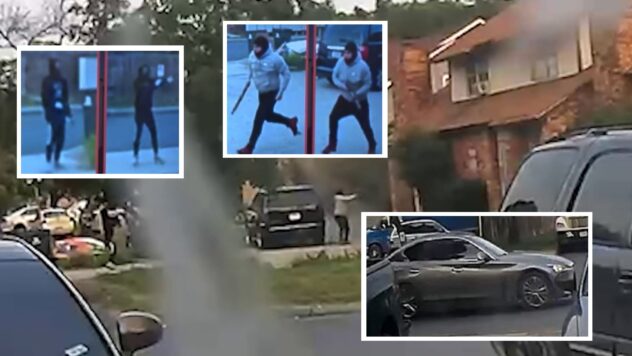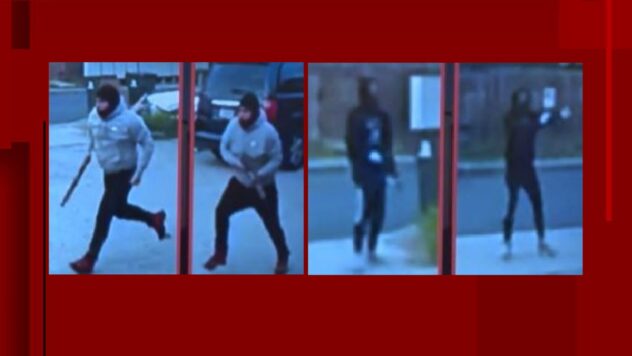Capturing the Moment: Artist Jennifer Balkan explores the here and now with ‘Pan-demon-ium’
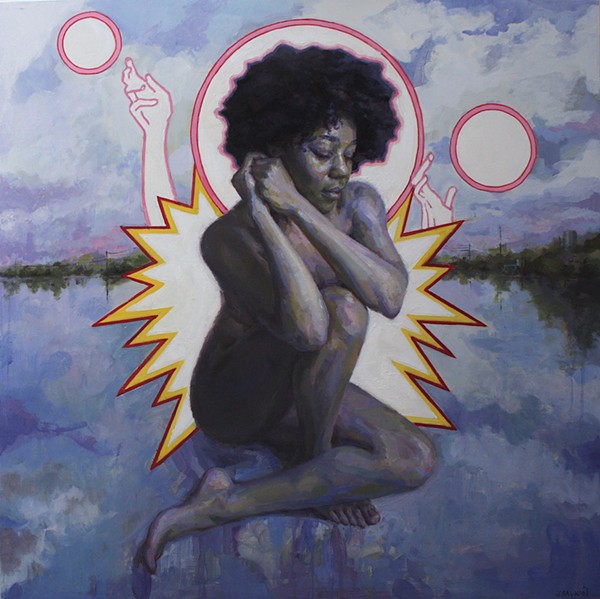
Alamo Heights might not be an obvious destination for contemporary art, but that hasn’t deterred Ana Montoya — a Nuevo Laredo native who opened her namesake AnArte Gallery in 2001.
Situated in The Collection shopping center, AnArte is approachable and colorful — two qualities Montoya holds dear. Mirroring the often-vibrant works on the wall, not to mention the hot-pink canopy out front, Montoya routinely signs her correspondence with a cheery “Have a colorful day!”
“[We strive to be] friendly and embrace everyone who walks into our gallery like royalty,” Montoya said. “And we embrace all the artists we represent as family.”
Clocking in at 30-plus members, that family unites talents from near and far, with a fairly high percentage of female painters based in Texas. But Montoya says that concentration was unplanned: “Talented female artists have gravitated to AnArte … but I’ve never stipulated this.”
The most recent example of this happy coincidence is “Let Them Eat Cake,” an exhibition showcasing the work of San Antonio painter Ana Hernández. Inspired by Marie Antoinette, Rococo ornamentation and interpretations of “the iconic French royal throughout the centuries,” Hernández’s AnArte exhibition completely sold out.
When asked about the show’s success, Montoya suggested the work resonated with viewers by inviting them into “a whimsical, colorful world in such a dark time.”
Energized by this recent success, Montoya is set to unveil “Pan-demon-ium,” an exhibition of paintings and drawings by Austin-based artist and educator Jennifer Balkan. In stark contrast to Hernández’s pastel-hued riffs on an “overtly saccharine” time and place, “Pan-demon-ium” takes shape in pensive portraits Balkan created over the course of the pandemic. The latest chapter in Balkan’s decades-long exploration of figure studies, the body of work fuses representational painting and drawing with pops of color inspired by comics and graphic novels.
The show will be held July 8 in an expanded new space Montoya moved into at the onset of “pinche COVID.” In anticipation, we scheduled a Zoom meeting with Balkan, whose backstory includes everything from sociological fieldwork in Chiapas to working in a rat lab in Boulder.
What was it like working in a rat lab?
It was interesting (Laughs). I actually became attached to some of my little subjects and absconded with a couple of them at the end of my job. They would have met their demise pretty soon, so I had some pet rats for a little while. … Rats are pretty intelligent and their ability to learn patterns and shapes has applications to four-year-old humans. We were teaching them to find their little food pellets, and they would have to distinguish between patterns and swim to this tiny little stool in a tank to get their reward. … So, it had pretty interesting cognitive applications that are very relatable.
What inspired you to study Latin American sociology?
I had a really amazing teacher. And I so value the people in our world that take teaching very seriously. Because this man, John Wardwell, may he rest in peace, led me into macro-sociology. He just had this amazing way of sharing his knowledge and I just became fascinated with this macro [view] … and this idea of groupthink. … I was at Washington State for just a year, and I transferred to University of Texas at Austin to go into their demography and population studies department, which has a huge Latin American focus. And I just basically fell into all this really interesting research [and] was surrounded by people focusing on not just sociology but Latin American sociology in particular, just by virtue of where we are geographically.
What did your fieldwork in Chiapas entail?
That was an amazing experience. I was turned onto Chiapas through my travels through Mexico. I started going in the summer of 1998 and the Zapatista uprising and land rebellion had started in 1994. And so [I saw] what was going on with the indigenous people, protesting that they weren’t afforded the resources, the rights they deserved. … Just watching — very much as an outsider — observing and learning about the people and the inequity and the rich culture and history really evoked my curiosity and my desire to learn more. And so, I ended up working in a couple of Mayan villages looking at migration patterns in and around the state of Chiapas and beyond. [I was] interviewing household members, getting to know people and looking at the patterns of what led people to leave versus what encouraged them to stay.
Were you making art during these times in your life?
I’ve done lots of drawing — forever. I guess the short answer is no, I really wasn’t. But I was definitely taking in the art around me.
So, you started taking art seriously in 2001?
Yes, more or less. I went to Western Europe for the first time and just got really inspired by seeing all these masterworks that I’d only seen in books. That’s kind of what woke me up to it and made me want to know more — and try it for myself.
How did you develop your current practice of portraiture?
I’ve always been very interested in people, painting people. And getting under the skin, so to speak. I think my interest in the way we think about things, the behavioral kinds of sciences that I’ve always been fascinated with, I see painting portraits as kind of an extension of that. And I’m drawn to paintings of people by other artists. … So, I started taking classes here in Austin. … grabbing bits of knowledge … putting it into practice by painting from life, from observation … going to open studios … and throwing myself full-on into it.
Do you paint from live models or photographs?
I do both. And especially in this pandemic world we’re in, working from a live model was pretty much impossible for a while. But that is OK, because I work from photo reference a lot. And when I teach, I often talk about how learning to draw and paint, if you are going for a representational rendering … there’s nothing better than learning how to do that from direct observation. … We perceive a lot more than a camera does. So, if you work enough from observation, then you can take your photo reference and add to it convincingly.
Tell me about the poppy flourishes that surround your subjects.
So, this latest stuff that’s about to open at AnArte I’m super-excited about because it’s merging the figures that I’ve been working at for years now with these elements of design and comic illustration. I love color, so using really rich color is not new [to my work]. And I have played with juxtaposing very two-dimensional-looking symbols and images with more three-dimensional-looking stuff. I love that. I love playing with people’s perception. … It’s been a real heck of a year and a half — to say the least, for all of us — and it’s really pushed me in different directions. I got really into drawing. … That’s been a new exploration for me — pens and markers.
What about the halos on your subjects? Are they a new development?
That’s a nod to a very old practice. It’s not new for me. I’ve been adding halos over the years. … I love employing old symbols that mean a lot culturally. So, the idea of adding these halos are elevating these people — spiritually and physically. And these are just regular people — wonderful, regular people. Just the idea of being on this Earth and dealing with all the crap that we deal with … especially this past year and a half. I want to indicate that just life — life itself — enlightens us, so to speak.
Does the work itself address what we’ve been through in the last year and a half?
I believe it does. I like to play with metaphor when I work. … Each painting represents some kind of natural phenomenon — either lightning, a tornado, an earthquake, predatory sharks, trying to survive while on the verge of sinking or drowning, [or a] supernova explosion. So, taking all this explosive stuff outside of us, but it being that it’s inside us — the coronavirus, this actual biological thing that has been horrendous in our lives — and then all the social unrest. … So much inequity has reared its head. … Some of the poses and expressions of my subjects [speak to that]. I really try to capture an emotive feeling in them and present that to the viewer.
Free, opening reception 5:30-7:30 p.m. Thursday, July 8, on view 11 a.m.-6 p.m. Monday-Tuesday, 11 a.m.-8 p.m. Wednesday-Saturday, 11 a.m.-5 p.m. MON through August 6, AnArte, 7959 Broadway, (210) 826-5674, anartegallery09.com.
Stay on top of San Antonio news and views. Sign up for our Weekly Headlines Newsletter.

